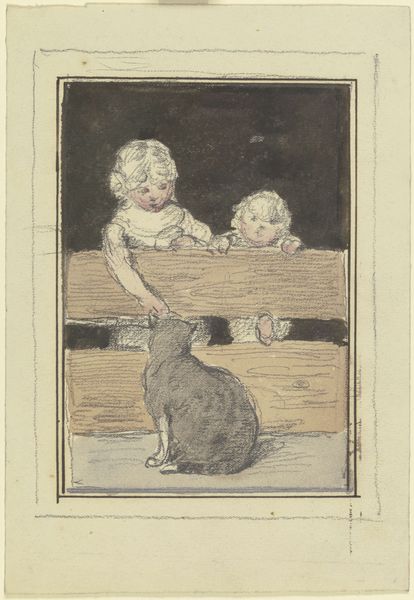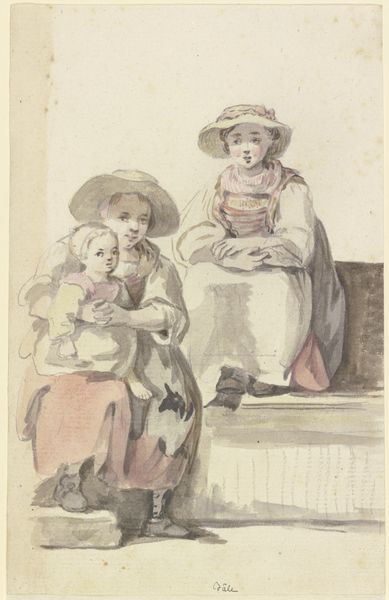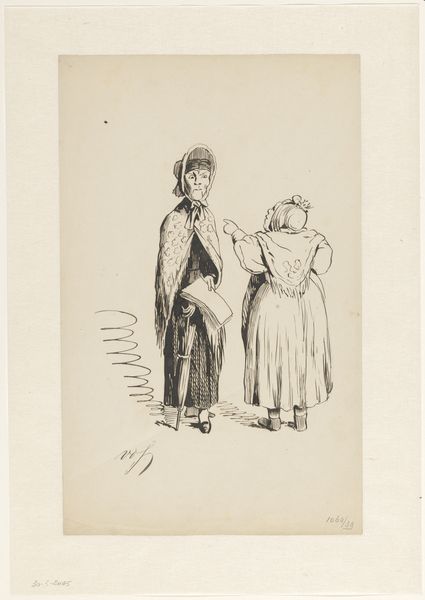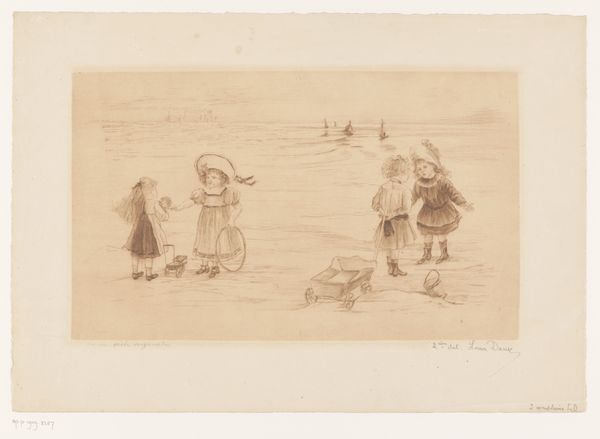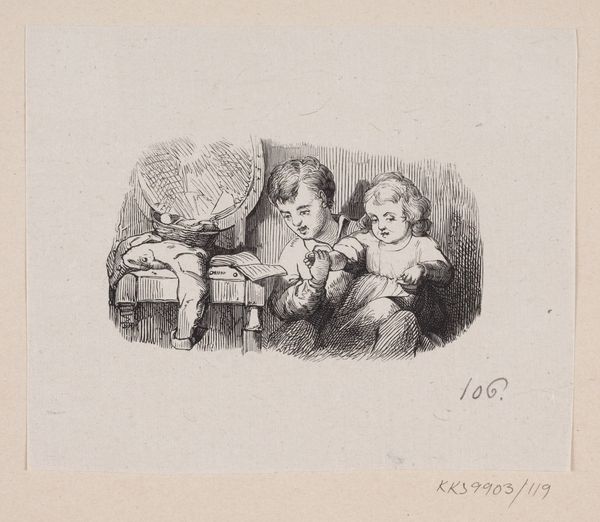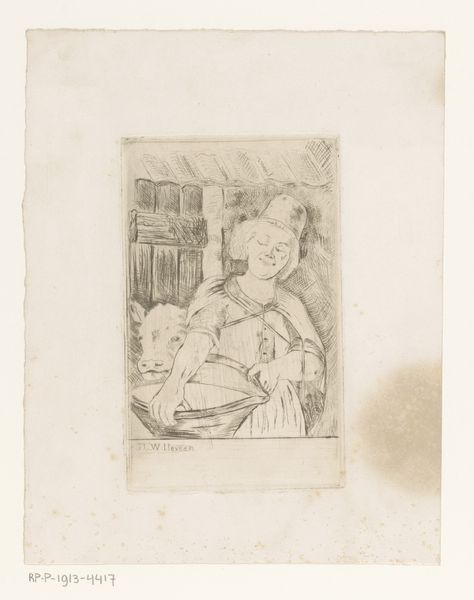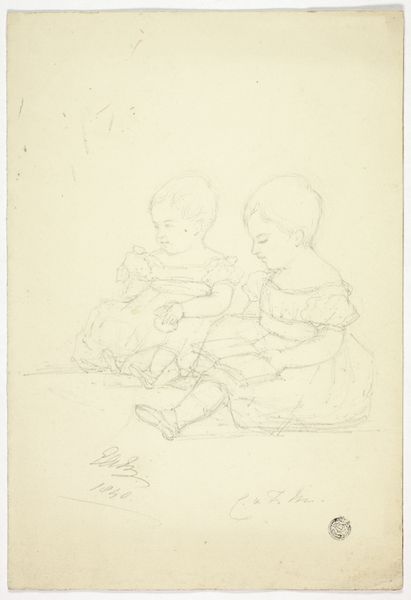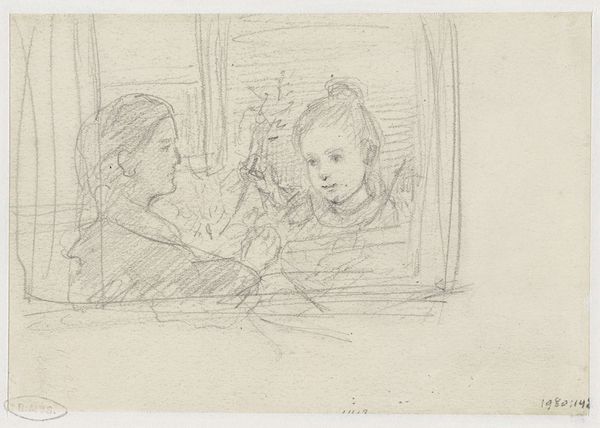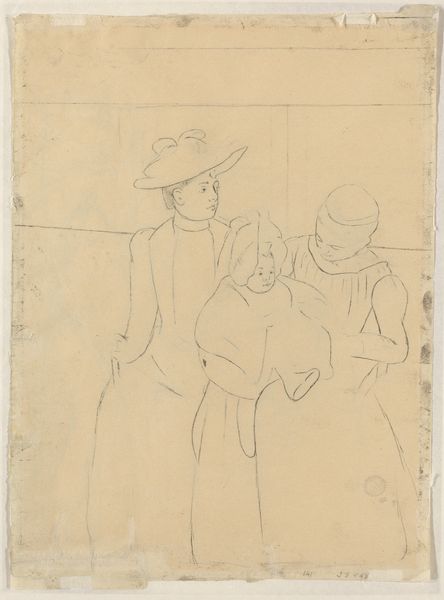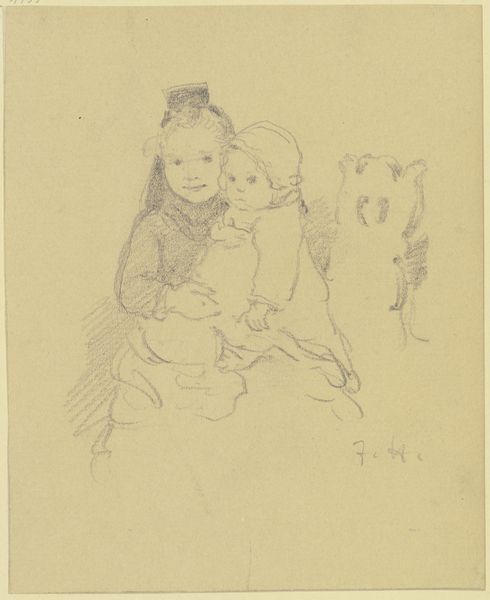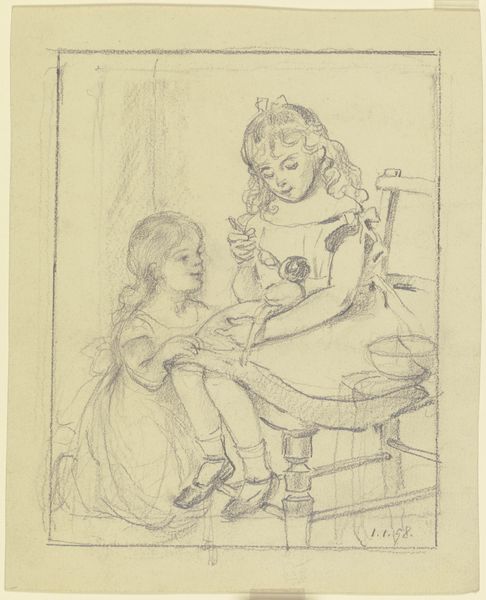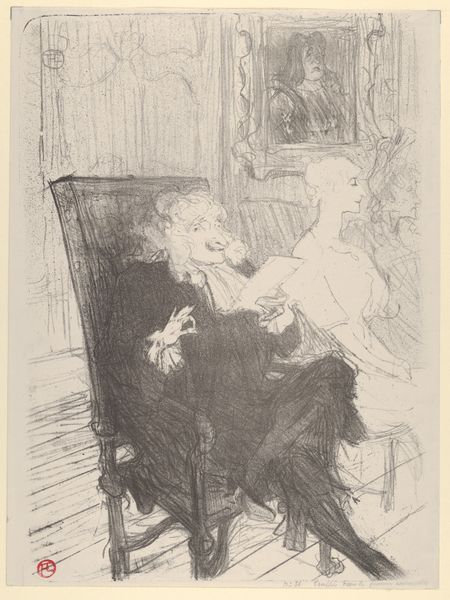
drawing, watercolor
#
portrait
#
drawing
#
watercolor
#
watercolour illustration
Dimensions: height 150 mm, width 175 mm, height 259 mm, width 213 mm
Copyright: Rijks Museum: Open Domain
Editor: This watercolor drawing is by Nelly Bodenheim; it's titled "Appel wat is dat lang geleden, van den Hof van Eden," dating from before 1951. It’s quaint but also a little… unsettling. The faces of the two figures are quite distinctive, almost doll-like. What do you see in this piece? Curator: Beyond the initial quaintness, I see a critical engagement with constructions of girlhood and innocence within a very specific historical and cultural context. The title translates to "Apple, how long ago was that, from the Garden of Eden" and it is significant. Consider the reference to the Garden of Eden. It evokes themes of temptation, original sin, and, most importantly, the loss of innocence. Who is the symbolic ‘apple’ in a post-Edenic world, and what are its modern socio-political associations? Editor: So, it's not just a simple depiction of children? Curator: Not at all. Bodenheim’s work often plays with the visual language of childhood, but she layers it with subtle critiques of societal expectations, particularly for young girls. Are these girls truly innocent, or are they already burdened by the weight of cultural narratives about morality and obedience? The positioning of the figures also strikes me – the slightly confrontational gaze and static poses almost like paper dolls pinned up for display, raises issues around representation and control. Does the use of watercolor contribute to a feeling of fragility? Editor: That’s fascinating. I was focused on the aesthetic qualities, but understanding the social and cultural subtext adds so much depth. I now understand how this piece engages with gender and cultural norms, especially in relation to children's representation. Curator: Exactly. The painting encourages us to question, not just passively observe. Art, after all, often reflects the ideologies of its time.
Comments
No comments
Be the first to comment and join the conversation on the ultimate creative platform.
